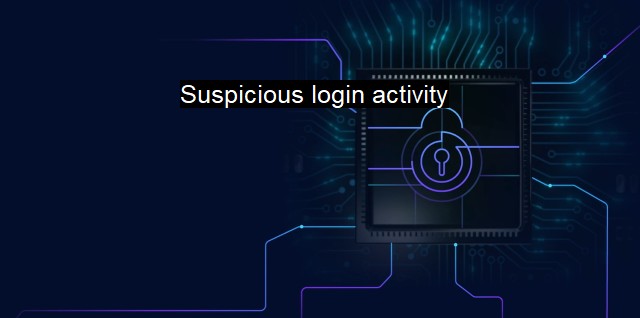What is Suspicious login activity?
The Rundown on Suspicious Login Activity: Risks, Threats, and Prevention Strategies
"Suspicious login activity" is a phrase often associated with the field of cybersecurity, and it signals a red alert for potential security threats. Cybersecurity, an essential facet of any modern-day technological setup, refers to measures taken to protect systems, networks, and programs from digital attacks. It is an umbrella term encapsulating a variety of methods utilized in preventing, responding to, and forecasting security vulnerabilities. By identifying and mitigating possible entry points for these attacks, parties can safeguard vast sums of sensitive information critical for maintaining privacy, sensitive commercial relationships, and even national security.Conceptually, the suspicious login activity pertains to a set of activities during the user's login to an online account or a system that is unusual, diverging from users' regular habits. Hence, these activities are considered suspicious. Anomalies like logging in from different geographic locations which users have never used before, from multiple devices, or at unusual times, pry open the door for an array of cybersecurity threats. This setting can hint towards unauthorized intrusion into personal or private resources, marking the beginning of cyber attacks, such as hacking, phishing, malware, ransomware, and many more.
To provide a simplistic picture, when a user attempts to access their account from an unfamiliar device or location, which was previously unused or unrecognized, network security systems label it as doubtful and potentially harmful. It warns the user, admin, or cybersecurity cell about this dubious activity. The same goes for time-bound anomalies, for instance, an attempt to breach systems commonly used in a particular timezone during off-hours could raise an eyebrow.
Many online services and platforms have put into place security alerts that notify the user about such uncertain activities, some even demanding identity authentication. It means verifying the user by unique codes sent on registered contact details, like emails or phone numbers. The intention behind recognizing these activities is to curb illegitimate access at an early stage and to take remedial actions promptly.
Continually monitoring login activities calls for robust cybersecurity infrastructure that combines a touch of high-tech defense mechanisms with rigorous security protocols. These measures look at identifying deviations from routine patterns using advanced analytics, made more user-friendly with machine learning

Suspicious login activity FAQs
What is suspicious login activity?
Suspicious login activity refers to any login attempt that seems unusual or different from your usual login pattern. This could include logins from unfamiliar devices or locations, repeated failed login attempts, and logins at odd hours of the day or night. It could be an indication that your account has been compromised or someone is trying to gain unauthorized access to it.What should I do if I notice suspicious login activity?
If you notice any suspicious login activity, you should immediately change your password and enable multi-factor authentication if it's not already enabled. You should also review your recent login activity and look for any unauthorized access. If you find anything suspicious, report it to your IT department or cybersecurity team.How can antivirus software help detect suspicious login activity?
Antivirus software can help detect suspicious login activity by monitoring your device for any signs of malware or unauthorized access. It can monitor login attempts and alert you if there is any unusual activity. It can also scan your system for any viruses or malware that could be compromising your login credentials.What are some best practices for preventing suspicious login activity?
Some best practices for preventing suspicious login activity include using strong and unique passwords for each account, enabling multi-factor authentication, avoiding public Wi-Fi networks, keeping your software and antivirus up to date, and being vigilant for phishing scams. You should also regularly monitor your login activity and report any suspicious activity to your IT department or cybersecurity team.| | A | | | B | | | C | | | D | | | E | | | F | | | G | | | H | | | I | | | J | | | K | | | L | | | M | |
| | N | | | O | | | P | | | Q | | | R | | | S | | | T | | | U | | | V | | | W | | | X | | | Y | | | Z | |
| | 1 | | | 2 | | | 3 | | | 4 | | | 7 | | | 8 | | |||||||